Heat networks
Heat Networks: Innovation in Thermal Management for a Sustainable Future
Heat and cooling networks are responsible for supplying thermal energy to multiple users, including residential, tertiary and even industrial buildings. Although they were previously used with non-renewable sources, in recent years the use of new energies has allowed these networks to contribute to the decarbonising the economy.
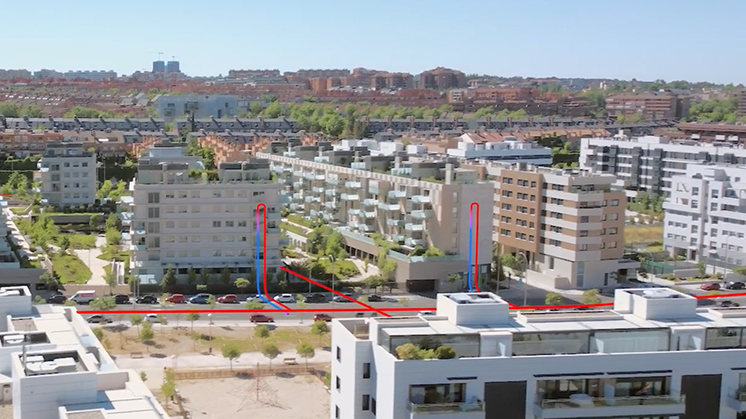
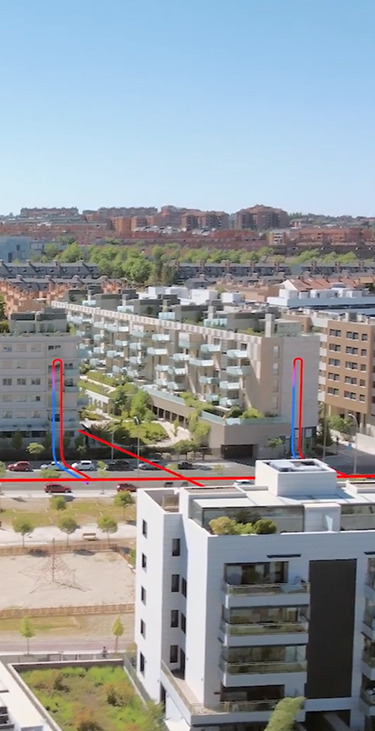
Heat networks in a neighbourhood
These grids produce heat and cooling centrally and distribute it through a piping system that meets the heating and cooling needs of the connected users. Although this type of energy has been closely related to the use of fossil fuels, Iberdrola, and its commitment to decarbonisation, has made it possible to deploy it using renewable sources.
In the past, only fossil fuels were used as a source of heat generation. Today, however, other sources such as waste heat from industry, heat pumps or biomass for heating water have been added. The use of these other forms of energy has made heat networks more efficient by reducing, for example, the temperature at which water is heated and helping to reduce energy losses.
The shift to this model has been increasing in recent years, with the support of the European Union. Its main advantages are cost reduction, lower CO2 emissions and reduced electricity consumption due to its efficiency, which continues to help reduce environmental impact.
How they work and features
Heat networks act as a supply of thermal energy in both residential and industrial areas. They are used to provide heating, domestic hot water and cooling. These networks are based on four main elements:
- Generation plants: developed to produce the total energy demand from 100% renewable sources (aerothermal, heat pump, biomass, etc.). The centralisation of energy generation makes it possible to improve the efficiency of heat and domestic hot water production, as well as to reduce emissions in urban areas.
- Pipe network: they transport the water, avoiding thermal losses. There are three different groups of pipes. On the one hand, there is the trunk network, which connects the plants with the distribution networks. Then there are the branches, which mainly follow the route of streets and roads. And finally, there are the service connections that allow the interconnection of the distribution network to the buildings.
- Substations: composed of an exchanger, control valves with pressure stabilisation and flow limiter that manages the customer's consumption and an energy meter to know the consumption of each user. It has a control and regulation system that controls the operation of the aforementioned equipment and also controls the pumping of heat distribution to end users. They separate the primary circuit, which corresponds to the energy supply circuit, of the heat network from the secondary circuit corresponding to the internal circuit of the building that demands heat from the network.
- Energy storage tank: accumulate excess heat generated by renewable sources when demand is low. This tank allows heat to be stored during periods of surplus production and released when demand increases. This optimises the energy efficiency of the system and ensures a continuous supply of heat to users, allowing greater flexibility in the management of heat supply and facilitating the integration of intermittent renewable energy sources, such as solar or wind energy, into the heat network.
Transformation of energy into heat
Generation of 100% renewable heat
- Residual heat (industry)
- Biomass
- Data centers
- Heat pumps
End users
- Residential
- Tertiary
- Industrial


 Transformation of energy into heat [PDF]
Transformation of energy into heat [PDF]
Thermal sources
The energy required for the operation of heat networks can come from various types of sources:
- Biomass boilers: these boilers have an approximate efficiency of 92 % and have the most advanced technology that allows a very significant reduction of CO2, NOx and particulate emissions. Today, biomass is the main source of energy for boilers in Spain, using forest chips. The potential of biomass is estimated to contribute 125/200 TWh per year.
- Heat pumps: heat pumps have a higher efficiency than combustion, also allowing higher efficiency in low temperature networks, below 50ºC. With good storage, they are the basis for the integration of dual district heating and cooling networks.
- Waste heat: this is the surplus heat from the operation of an industrial process. It can be recovered and used as an artificial heat source thanks to heat pumps. In this way, heat networks become another entry point to promote industrial decarbonisation. Among the most interesting industrial sectors for waste heat recovery are data centres due to their uninterrupted operation and their need to constantly evacuate large amounts of heat.
How can a district heating network help decarbonise the economy?
On the one hand, the district heating network helps decarbonisation due to the use of renewable energies, eliminating fossil fuels from the process. On the other hand, the centralisation of generation allows the production of heating and domestic hot water in a more efficient and less polluting way by eliminating emission sources within urban centres – and minimising, for example, the pollution pall hanging over the city, known in Spain as "thermal beret" effect. For the European Union, only grids that incorporate at least 50 % renewable (or waste) energy are efficient.
Iberdrola heat networks
In Spain, we are developing a portfolio of 37 projects with a potential of more than 4 TWht/year in the cities with the highest potential, 22 heat networks (~2.8TWht in cold areas with high population density) and 15 additional heat networks under study (~1.2 TWht).
Within these projects, it is worth highlighting the start of our first heat network in the city of Palencia, where we have obtained a 50-year concession from the city council and a significant grant from the IDAE within the incentive programme for heating and cooling network projects that use renewable energy sources of more than 1 MW.
In United Kingdom, one of the most notable projects is ScottishPower's eHeat Networks, which is focus on decarbonising residential and commercial buildings through the use of shared ground-source heat pumps. Their aim is to provide affordable access to sustainable heating solutions, supporting the transition to a net-zero future.
eHeat Networks installs and maintains shared geothermal networks that supply thermal energy to multiple properties. Each home has its own heat pump for heating and hot water and is responsible for its own electricity use. Users pay a fixed annual fee, indexed to inflation, similar to a TV licence – offering a predictable, regulated cost.
Decarbonising heating is essential to reaching the net-zero target by 2050, with 22 million homes needing to be decarbonised. From 2024, new-build properties will no longer be allowed to install direct-emission heating systems.
Shared networks offer customers cost-effective access to ground heat, improving year-round energy efficiency and reducing bills.
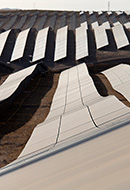
Decarbonisation
Regulatory principles and actions to fight climate change.
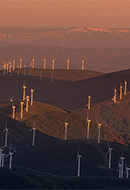
Electrification
Find out how it contributes to each sector and why it is key to tackling climate change.
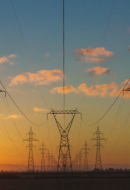
The IEA heralds the ‘Age of Electricity’
It has launched a report that emphasises the role of electricity in the new energy scenario.




